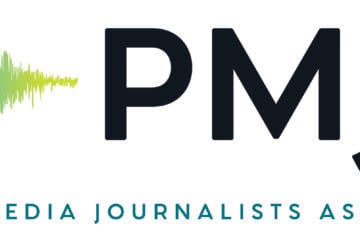Survey finds ‘areas of sensitivity’ in foundation support for nonprofit news
A new study of foundation funding for nonprofit journalism found that about half of funders surveyed support coverage of topics on which they also seek to influence public policy, while a minority of news organizations have written guidelines in place clarifying what kinds of funding they accept.
The study, released Wednesday by the American Press Institute, surveyed 94 nonprofit media organizations, 146 commercial outlets and 63 funders that support journalism.
“We believe this work is the most comprehensive effort to date to explore the ethical landscape of nonprofit news,” wrote the report’s authors.
The survey found “relatively high levels of transparency” among news organizations about where their funding comes from and what it supports. But the authors also noted “areas of sensitivity and political controversy” among funder-grantee relationships, such as widespread funding for narrow subject areas and inconsistent standards for communication.
“A good deal of the protection of journalistic independence in the realm of nonprofit media is left to good intentions,” they wrote.
The lack of written policies for journalists’ interactions with funders was “one of the most striking findings about the research,” the study said. Forty-three percent of nonprofit news organizations said they had no policies about how to communicate with funders. Only 13 percent of the organizations said they ask funders to include policies on independence in grant agreements.
Meanwhile, about a third of funders said they fund media with the aim of advancing a “larger strategic agenda.” Fifty-nine percent have supported coverage of specific subjects — “fracking as an example rather than the environment in general, or specifying coverage of breast cancer rather than women’s health in general,” the report said.
Most newsrooms surveyed welcome funding of these kinds of specific coverage areas. Only one in five nonprofit news organizations said they do not accept such support.
“This level of specificity … can be more complicated than if the money were earmarked for more general subject areas, or as unrestricted general operating funds,” the report said. “Would this coverage have been done had the funder not specified it? Does this kind of specificity get near or cross lines of journalistic independence? And what kind of firewalls or lines of communication are needed to make sure it doesn’t?”
The survey also found a gap in how funders and news outlets perceive their dealings with each other. While 17 percent of funders said they talk with journalists “in some specificity about the work being produced,” only 7 percent of grantees said the same. More news outlets than funders said that they discuss coverage only in general terms.
A fifth of the nonprofit media outlets surveyed said their foundation funding has grown, and 39 percent depend on foundations for a majority of their revenue. The largest segment of nonprofit media outlets surveyed were digital-only, about 40 percent. And about a third of the nonprofits were founded within the last five years.
The report’s authors are API Executive Director Tom Rosenstiel and Program Manager Kevin Loker; Bill Buzenberg, former executive director of the Center for Public Integrity and a member of Current’s advisory group; and Marjorie Connelly, former polling editor for The New York Times. The survey was supported by the John S. and James L. Knight Foundation and the Bill and Melinda Gates Foundation.
API is hosting a discussion of the study Wednesday at 5:30 p.m. at the Columbia School of Journalism.
Related stories from Current:






Of course, the NewsHour is the most strongest news programme with a big budget. All thanks to viewers like you. #PBSNEWS
It is ironic that many in the general viewing and listening public think taking corporate underwriting for news and documentary programs is corrupting, but that foundation support is good. Actually, in my experience, corporate underwriters have far less influence over topics and coverage than foundations do, and are far more likely to be hands-off. Foundations have their own mission and agenda, and fund projects that they think will advance that agenda. It gets very complicated when a foundation with a narrow focus, say for argument sake tropical flora and fauna, provides a grant for news coverage of tropical flora and fauna. The result can be increased coverage of TF&F beyond what its general news-worthiness is. We can point to real life examples as well. On the other hand, over many years I can count on the fingers of one hand the times a corporate underwriter tried to influence what was covered and how. And then it was only after the fact, in response to coverage that they thought was unfair or unbalanced. They always have the right to take their advertising dollars elsewhere, and I suppose some do, But generally, they understand the deal.
I’m not addressing self-censorship, which can be real, and exists in media of all types, including public media.
I sometimes think that some public media supporters, whether right or wrong, think that foundations are making donations for the public good because they’re not-for-profits while corporations are just trying to get their ads to an audience that won’t watch or listen to the places where ads are legit. Never mind that when Mobil was underwriting “Masterpiece Theatre” and when the underwriting rules changed to let them pitch Mobil Supreme or Mobil 1 on the show, they still stuck with Christopher Sarson saying “‘Mahsterpiece Theatah’ is made pawsible by a grawnt from Mobil…” and made their extra message just a request to support the local stations. (And that they ended their support of PBS because of the new management after the merger with Exxon.)